- Home
- Peter Matthiessen
Far Tortuga
Far Tortuga Read online
“This novel is Matthiessen at his best—a masterfully spun yarn, a little other-worldly, a dreamlike momentum.… Like everything of his, it’s also a deep declaration of love for the planet.”
—THOMAS PYNCHON
“One of the best books of the year.”
—The New York Times
“Unique … original … enormously haunting.”
—WILLIAM STYRON
“Without question the most poetic and original novel of the season.”
—San Francisco Chronicle
“It exudes a magnificent and paradoxical radiance.”
—Saturday Review
“An example of what the novel of the future will undoubtedly become—a highly charged vision of life that makes tremors run along our spine.”
—Cleveland Press
ALSO AVAILABLE FROM VINTAGE
At Play in the Fields of the Lord
Men’s Lives
Partisans
Race Rock
Raditzer
Vintage Books Edition, January 1988
Copyright © 1975 by Peter Matthiessen
All rights reserved under International and Pan-American Copyright Conventions. Published in the United States by Random House, Inc., New York, and simultaneously in Canada by Random House of Canada Limited, Toronto. Originally published, in hardcover, by Random House, Inc., in 1975, and in paperback, as a Vintage Contemporaries Book, by Vintage Books, in 1984.
Library of Congress Cataloging-in-Publication Data
Matthiessen, Peter.
Far Tortuga.
I. Title.
[PS3563.A8584F3 1988] 813’54 87-40154
eISBN: 978-0-307-81969-7
v3.1
FOR MARIA
ACKNOWLEDGMENTS
This book required and received unusual care and attention from all involved in it, and I am very grateful to such friends as Judy Gimblett for expert typing of the interminable drafts; Candida Donadio, the book’s agent, for her fearless advocacy in the marketplace; copy editor Lynn Strong for her concern, patience and unfailing intuition; and Kenneth Miyamoto, the book’s designer, whose fine work speaks here for itself.
Especially I wish to thank my editor, adversary and long-time friend, Joe Fox; we have been through hell together.
Death, Thou comest
When I had Thee least in mind.
—Everyman
In terms of distance from the nearest land, the most isolated point in the Caribbean is a group of ocean islands south of Cuba. On a voyage north from Panama to Hispaniola, according to the journal kept in 1503 by Ferdinand Columbus, “we were in sight of two very small and low islands, full of tortoises, as was all the sea about, insomuch that they look’d like little rocks, for which reason those islands were called Tortugas.” Later, these islands were confused with Far Tortuga, called Misteriosa by the Spanish, a remote cay on the outer banks off Nicaragua that is not to be found on modern charts; Far Tortuga may have worn away in hurricane, leaving only submerged reef, but it seems more likely that this cay was a mere dream and legend of the turtle men.
Eventually, Columbus’ islands became known as the Caimans, Caymanos, and Cayman Islands, from the Carib caiman, or “crocodilian.” (Sir William Dampier, who visited Grand Cayman in 1675–76, mentions the presence of crocodiles on the surface at West Bay.) In the late seventeenth century, the Caymans were a common ground for sea rovers of all nations, who came there mainly for tortugas; these green sea turtles, which could be kept alive on deck, supplied fresh provender for the pillage of the Caribbean.
Apart from their turtles, the barren islands were considered worthless, and no country bothered to claim them until 1655, when England seized Jamaica from Spain. The British regarded the turtle cays as outposts of the larger island, and acquired them officially in 1670 by the provisions of the Treaty of Madrid. In this same year, the Spanish of Cuba burned twenty wood huts at “Caimanos” in an effort to suppress its raffish settlement of castaways, freebooters and deserters from the British army in Jamaica; these punitive raids, which continued for a century, have never been forgiven to this day.
In 1677, Dutch pirates taking water in the islands left behind a few blacks seized from a French slaving ship burned at Haiti, and some of these Africans mixed with the whites to form the ancestral population. By the time the first true settlers arrived at Grand Cayman, in the early eighteenth century, the green turtles were so depleted that ships no longer came to hunt them, and the Caymanians themselves were scouring the south coast of Cuba and the islands called Jardines de la Reina, where the turtle fishery was eked out with brigandage. Apparently they had retained their “turbulent disposition,” for as late as 1798, Grand Cayman was called a “pirate’s nest” by the Cubans, who appealed to Madrid to wipe it off the earth: “The islet is inhabited by a handful of lawless men who bear the name and carry on the trade of fisher-folk, but who are in reality nothing more than sea-robbers. The island constitutes their lair, and it is the place where they hide their ill-gotten gains.” The pirate Neale Walker frequented the island, and Edward Thatch, the notorious “Blackbeard,” once “took a small turtler” at Grand Cayman, though what fate is implied by “took” is not recorded. Without question it was a ruffianly place. As Bunce observes in Sir Walter Scott’s The Pirate: “Is he dead? It is a more serious question here than it would be on the Grand Caymains … where a brace or two of fellows may be shot in the morning and no more heard of, or asked about them than if they were so many wood pigeons.”
In the nineteenth century, the only marked change in island customs was the reduction of piracy to the “wrecking business”—luring ships onto the reefs, premature salvage and the like—and the transfer of the turtle fishery from south Cuba to the Miskito Cays off Nicaragua, with a resultant occupation by Caymanians not only of that coast but of the remote cays from Old Providence, a Colombian possession, north to the Bay Islands of Honduras. Miskito Indians, who were expert turtle fishermen, were conscripted for the crews (Dampier had taken a Miskito harpooner on his voyage to the Celebes) and there occurred a small reverse migration of these Indians to Grand Cayman: even today, in the faces of the turtle men, a strain of Indian is quite apparent. But contact with the outside world was small, and declined still further as the nineteenth century came to an end. The Caymans lay across the trade winds, near old sailing routes, but with the advent of steam and swift straight courses, the passing ship was rarely more than a faint smudge on the encircling horizon.
Contents
Cover
Other Books by This Author
Title Page
Copyright
Dedication
Acknowledgments
Epigraph
Chapter 1
Chapter 2
Chapter 3
Chapter 4
Chapter 5
Chapter 6
Chapter 7
Chapter 8
Chapter 9
Chapter 10
Chapter 11
Chapter 12
Chapter 13
Chapter 14
About the Author
Other Books by This Author
Daybreak.
At Windward Passage, four hundred miles due east, the sun is rising. Wind east-northeast, thirty-eight knots, with gusts to forty-five: a gale.
Black waves, wind-feathered. White birds, dark birds.
The trade winds freshen at first light, and the sea rises in long ridges, rolling west.
Sunrise at longitude 76, 19 degrees north latitude.
Sunrise at longitude 77.
Sunrise at the lesser Caymans. Horizon rises from horizon. To the westward, Grand Cayman is gray; its high cumulus, visible to migrant birds a hundred miles away, is a gray-pink.
/> The sun, coming hard around the world: the island rises from the sea, sinks, rises, holds.
Daybreak at Gun Bay Village, at East End. Parted, the Antilles Current caroms on the reef. The new light turns the sea from black to blue, the surf from gray to white, the hulks high on the reef from rust to black.
Sunrise at Old Isaacs (Isaac Bawden, deserter, first known settler; dates obscure). The sun kindles the thatch of hip-roofed cottages, built at East End since early days. Sand road, white pickets, periwinkle; white sand yards bordered with pink conchs.
Cock crow.
Wind and cloud sail down the island, east to west. A sweet warm wind comes, sucking faint damp from the parched cactus and palmetto.
Sunrise in trackless Ally Land. New light strikes the blue spines of an iguana. Its chewing slows. Starting from its hole, a land crab pauses, then withdraws; a grain of earth rolls down into the hole.
Sunrise at Old Man, on the north coast. Blue shacks with dark shutters, closed.
Sunrise at Meagre Bay and Bodden Town, on the white road of coral marl that trails along the emerald sounds of the south shore. Fringing the sounds is the long reef, and beyond the reef, cold deep blues of the abyss.
Sunrise at Kitty Clover Land.
Sunrise at Newlands and Careening Place and Booby Cay.
Sunrise at Savanna. A lone dog on the road, stiff-legged. Poinsettia and jasmine, low white walls.
Green parrots cross the sunburst to the mango trees. Light polishes gray-silver cabin sides, glows in the bolls of the wild cotton, shines the dun flanks of a silken cow in pastures of rough guinea grass; a gumbo limbo tree, catching up sun in red translucent peels of shedding bark, glows on black burned-over ground between gray jutting bones of ocean limestone.
New sun on a vermilion fence. Breadfruit and tamarind.
Cock crow.
Sunrise at Spotts Bay and Matilda Pond. In a woman’s tongue tree, the dawn wind passes and racketing pods fall still.
Sunrise at Prospect, on South Sound, abandoned since the Hurricane of ’32. The Prospect Church decays in an old orchard, grown over now by seaside wood; the roof of the church is wind-slotted, battered by gales. Lizards scatter in the leaves and sun-spots that stray in the church door, and a hermit crab, snapped shut, rocks minutely in the silence.
In the graveyard behind the falling church grows oleander and white frangipani. On the ironshore below, incoming seas burst through black fissures in the rock, and black crabs scutter.
SACRED
TO THE MEMORY
OF
WILLIAM PARCHMENT
BORN
16TH DECEMBER 1924
PERISHED
APRIL 1968
ON THE MISKITO BANKS
The quai at Georgetown.
Shade trees, a small waterfront of green and pink pastels. Soft air of sunrise. Birdsong and a bicycle bell. Sweet rot, tin roofs, bougainvillaea.
Cock crow.
Three walking figures and a dog.
Black palm fronds stir against the eastern light: a hard glitter in the dew on leaf and tin where the sun pierces burning trees. Hard sun, high wind, high morning cumulus that draws swift shadows across the quai and dampens clacking palm fronds with a shower. A bird voice and sweet flower smells blow over Hanging Point into the ocean.
Clear of the land, the clouds string out and dissipate in the emptiness to westward, where the rain returns into the sea.
Figures beneath an almond tree observe the distant rain. Though the water at quaiside, in the lee, is clear and still, the green schooner offshore swings on her mooring. Beyond, the water shades from emerald to gray to the hard blue of the Antilles Current which mounts in shimmers to the sea horizon, rolling away west toward Quintana Roo.
Small motor vessels of several hundred tons may berth alongside a rough wharf at Georgetown, Grand Cayman, the capital of the Islands. Docking facilities are poor.
There are reasonably frequent services to Tampa and Miami, Florida; Kingston, Jamaica; and the Bay Islands, Republic of Honduras.
A big man in a turquoise shirt forsakes the figures by the almond tree. He steps backward, his voice rising. In his left hand, he carries a cardboard suitcase; in his right, a string bag of green mangoes. He rolls down to the quaiside, hailing an old man across the wind.
… a fair wind for de Cays, den, Copm Teddy!
The old man waits for the wind to ease before making his answer; he does not raise his head. Steadily he pares the skin from night-blue tuna. The fish, set out in a rigid row, have long lean wings that hold the ocean light.
You sailin late, Byrum! Get more wind den turtle, in de May time!
On the quai, a weathered sign reads WELCOME. Behind the sign, old boat ribs rise from a graveyard of dead oil drums, rust-gutted. Under the quai, in a slip blasted from black ironshore of fossil coral, is a Cayman catboat, an open boat like the whaleboat of other days that can be rigged quickly as a sloop. A small black man, barefoot, in ragged clean white T-shirt and blue denims cut off as shorts, is rolling a blue drum across the bench of coral and concrete that adjoins the slip. At quaiside, where he brakes the drum, its rumble dies in a thick slosh of oil.
The man in the turquoise shirt lays his suitcase flat and sets the mango bag on top.
What say, mon? Easy, mon! I give you a hand dere with dat drum!
Dat okay—I got dis by myself. Long’s he don’t squish dat sailor in de boat, Speedy doin fine!
Call dat a sailor? Dat old Vemon! What say, Vemon?
A man is slumped in the bilges of the catboat. His rags are nondescript in color; on his head sits a striped engineer’s cap and on otherwise bare feet are old black shoes, well-rotted by salt water. Upright in his lap is a bottle with a yellow label: SAINT CECILIA RUM. The man’s chin rests on the gunwale of the boat, and he stares into the shallows of the small cove called Hogsty Bay.
On the bottom, the flayed skin of an angelfish is yellow-gray, shaped like a face. Through a faint rainbow of petroleum, the white sand is scattered with cans and bottles in welt-colored crusts of coralline algae, and sand-shrouded old conchs, each with a hole knocked in the whorl, and white coral skeletons poxed with red hydrozoans.
A tubeworm blows its ghostly waste. In the small surge of tropic tides, as the bottom breathes, the faceless face rises and falls.
The catboat rolls and surges with the loading of the fuel drum; water laps against the quai. The drunk frowns, coughs and scratches, staring downward. He tries to spit; the spit hangs from his chin. Cursing, he wipes his mouth, then drains the bottle and dashes it into the water; the reef fish dart from point to point, in liquid sparkles.
sergeant major
butterfly fish
beau gregory
The bottle fills, and the yellow label shimmers; in the silence, in slow motion, the bottle sinks to the white sand, does a slow roll, and comes to rest beside the face-shaped skin.
Shuddering, the drunkard glowers at the small sailor in the T-shirt.
Black Honduran!
How dat go, Vemon?
Nemmine, mon, he don’t bodder me. Speedy doin fine.
Goddom Vemon. (sighs) Dat de last fuel drum you got dere, Honduras?
Dat de last one.
Fueled up, Vemon? Well, let’s go, den! Ready, Vemon? You got any last-minute engagements?
I waitin on you, Byrum! Ain’t I settin in de boat? We goin to sea!
Byrum slings his gear into the boat. He winks at Speedy.
Dat a sailor talkin, hear de way he do? De thing was, I had to give more sweetenin to my intended dere, Miss Gwen—hey, mon?
Byrum socks Speedy on the arm.
Touchin de bun! Don’t have none of dat down in Honduras?
Oh, we heard about dat, I guess.
Heard about it! Dass all dem niggers do down dere is coot! Goddom Honduras! Me and de Coptin, we ain’t never goin back dere in dis life, I tell you dat!
You and de Coptin! Vemon, you don’t shift you ass, it gone get wet!
> The reef fish jump as an oar blade darts downward—choonk!—and parts the oil slick; tepid bubbles rise, and a faint grating sound, as the oar probes for a footing in dead coral. The boat is shoved stern foremost from the slip.
In the bow, Speedy mans the port oar; Byrum, astern, mans the starboard. Vemon sits sullen in the bilges.
The boat slides across the harbor toward the green schooner. At the commercial wharf, a crewman on the motor vessel Daydream dumps slops into the harbor; in the clear water, the stain rolls.
What say dere! We gone see you on de banks?
No, mon! Season done with, Byrum! De onliest one you gone find out dere is Desmond Eden!
Copm Desmond! Mon, oh mon!
From the water between the catboat and the Daydream, a man-o’-war bird snatches up bright entrails of a tuna, kept afloat by gas caught in the bladder. From the shore, in the new heat of growing morning, blow sweet market smells: fish, blossoms, rotted coconut, papaya, creosote.
BRING DAT BOAT ABOARD OF HERE!
Byrum bends to his oar; the sun dances on his turquoise shoulders.
Hear dat, Honduras? Old Raib jumpin already!
The Lillias Eden, formerly a schooner. Men move about her decks, which are littered with ship’s stores, fuel and water drums, stove wood, fishing gear. On her stern a raw new deckhouse is still unpainted. Her rusty hull is worn near bare of its green paint; rope fenders sag, her shrouds are frayed, her taffrail broken.

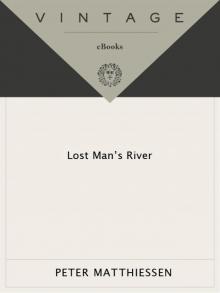 Lost Man's River: Shadow Country Trilogy
Lost Man's River: Shadow Country Trilogy The Tree Where Man Was Born
The Tree Where Man Was Born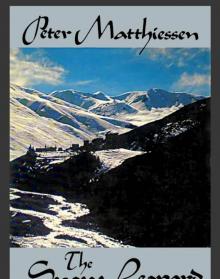 The Snow leopard
The Snow leopard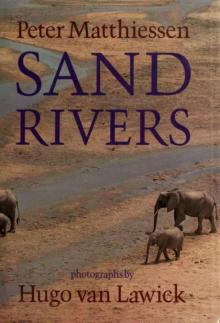 Sand Rivers
Sand Rivers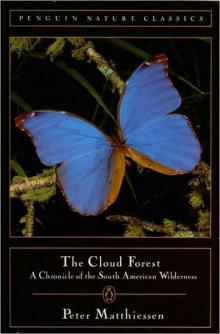 The Cloud Forest
The Cloud Forest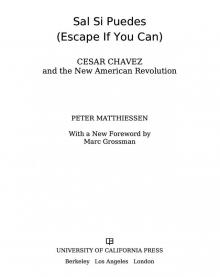 Sal Si Puedes (Escape if You Can)
Sal Si Puedes (Escape if You Can)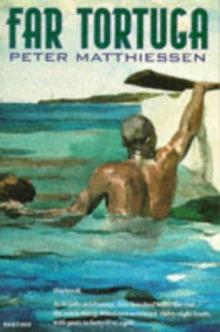 Far Tortuga
Far Tortuga Men's Lives
Men's Lives On the River Styx: And Other Stories
On the River Styx: And Other Stories Shadow Country
Shadow Country At Play in the Fields of the Lord
At Play in the Fields of the Lord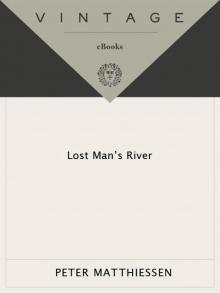 Lost Man's River
Lost Man's River Killing Mister Watson
Killing Mister Watson On the River Styx
On the River Styx